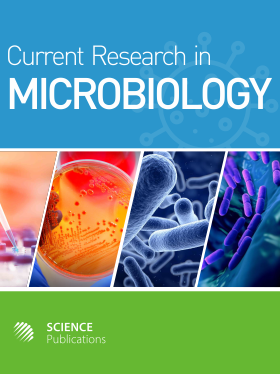Leaf Surface Bacterial Colonization in Response to Brevicoryne brassicae (L.) Infestation of Brassica chinensis L.
- 1 West Bengal University of Technology, India
- 2 Leibniz-Institute of Vegetable and Ornamental Crops Großbeeren/Erfurt e.V., Germany
- 3 Humboldt-Universität zu Berlin, Germany
Abstract
Problem statement: Epiphytic population is an intrinsic part of the leaf surface. The effect of stress like insect infestation is not well understood. The aim of the study was to determine possible effects of insect infestation on bacteria community. Approach: The leaf surface microbial profile of Brassica rapa ssp. chinensis (L.) was investigated using a culture-dependent approach under normal and infested condition. Results: The presence of mostly novel Gram-negative bacilli on the leaf surface of B. chinensis was evident, with maximum identity with members of the phyla Firmicutes and Actinobacteria at the 16S rDNA level, as evident from GenBank accession numbers FJ231349 to FJ231355. The specialist aphid Brevicoryne brassicae (L.) was used as a model to study the effect of insect infestation on the epiphytic leaf surface microbial populations in B. chinensis. Plants infected with aphids had significantly higher bacteria counts than non-infested plants. Conclusion: These differences were up to 10,000-fold within three days post infestation. This increase is probably due to the secretion of honeydew, which acts as an additional carbon source for the pre-existing microbes. However, aphid infestation had no effect on the qualitative variation of microbes on the plants, which rules out the abundance of microbial population on the leaf as a contribution of the aphids alone.
DOI: https://doi.org/10.3844/ajmsp.2010.36.41

- 6,437 Views
- 4,257 Downloads
- 0 Citations
Download
Keywords
- Epiphytic microbial
- Brassica chinensis
- aphid infested group
- Brevicoryne brassicae
- phyllospheric bacterial
- Genomic DNA
- scanning electron microscope
- statistical analysis
